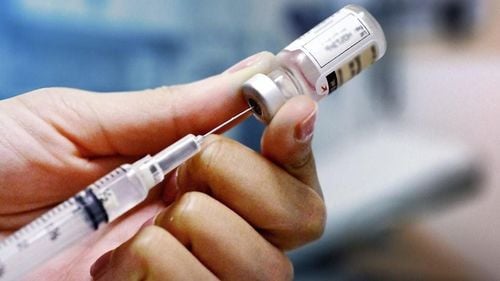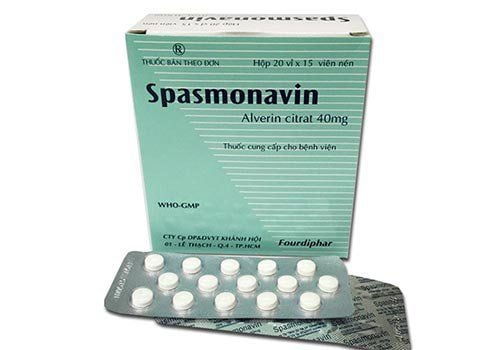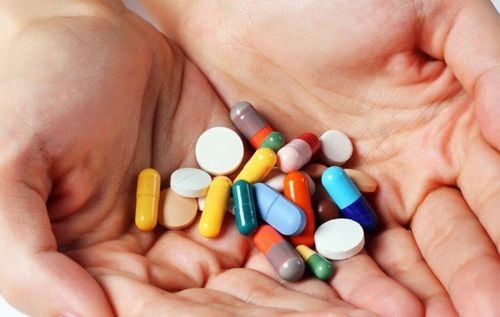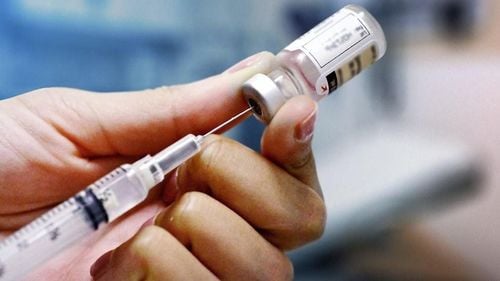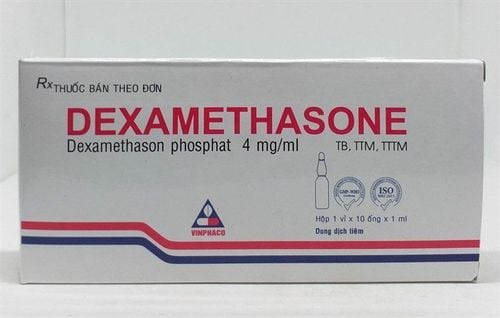This is an automatically translated article.
Nawotax contains the active ingredient Cefotaxime, a 3rd generation parenteral cephalosporin antibiotic with broad-spectrum bactericidal action. Let's find out how to use and what Nawotax 1g has to do with the article below.1. What are the effects of nawotax 1g?
Nawotax medicine 1g is an injection containing Cefotaxime 1g, this is a prescription antibiotic used to treat indications of cervicitis or gonococcal urethritis, rectal gonorrhea, infections caused by bacteria and also as prophylactic for surgical infections. Cefotaxime can be taken alone or in combination with other medicines. Cefotaxime is a 3rd generation Cephalosporin antibiotic. It works by stopping the growth of bacteria.
2. Indications of Nawotax
Nawotax injection for the treatment of bacterial infections such as pneumonia and lower respiratory tract (lung) infections; gonorrhea (a sexually transmitted infection); meningitis (infectious disease of the membranes surrounding the spinal cord and brain) as well as other infections of the brain and spinal cord; and infections of the abdomen (stomach), female reproductive organs, blood, skin, joints, bones, and urinary tract. Cefotaxime can also be injected before surgery, as well as during and after a cesarean section to prevent infection.
3. How to take Nawotax
Nawotax can be administered by intravenous infusion. 1-2 grams are dissolved in 40-100ml of water for HA injection or 0.9% Sodium chloride injection BP or 5% Dextrose injection BP. The prepared infusion should be infused over 20 - 60 minutes.
Dosage:
The recommended dose for mild to moderate infections is 1g every 12 hours. However, the dosage may vary depending on the severity of the infection, the susceptibility of the causative organism, and the patient's condition. In severe infections, the dose can be increased up to 12 grams per day in 3 or 4 divided doses. For infections caused by susceptible Pseudomonas spp. Daily doses greater than 6 grams will usually be required. Children: The usual dosage range is 100 - 150mg/kg/day in 2 to 4 divided doses. However, in very severe infections, doses up to 200 mg/kg/day may be required. Neonates: The recommended dose is 50mg/kg/day in 2 to 4 divided doses. In case of severe infection, 150-200mg/kg/day in divided doses. Dermatological diseases: A single injection of 1 gm can be administered intramuscularly or intravenously. Surgical Prophylaxis: Immediately before surgery, a single dose of 1g is suitable for most procedures. For procedures longer than 4 hours, a dose of 2g is recommended.
4. Undesirable effects of the drug Nawotax
Adverse reactions to Nawotax are relatively rare and are usually mild and transient. Reported effects include candida infection, rash, fever, elevation of liver transaminases and/or alkaline phosphatase, and diarrhea. As with all cephalosporins, pseudomembranous colitis may rarely occur during treatment. If this occurs, the drug should be discontinued and specific treatment instituted. As with other cephalosporins, changes in renal function have rarely been observed with high doses of Nawotax. High doses of cephalosporins, especially in patients with renal failure, can lead to encephalopathy. Hypersensitivity reactions have been reported, including skin rash, drug fever and very rarely anaphylaxis.
5. Contraindications of Nawotax
Patients with a history of hypersensitivity to Cefotaxime, or other cephalosporin antibiotics should not take Cefotaxime.
6. Be careful when using Nawotax
Nawotax should be prescribed with caution in patients with a history of colitis. Since high and prolonged antibiotic concentrations may occur relative to usual doses in patients with transient or persistent decreased urine output due to renal impairment, the total daily dose of Nawotax should be reduced when administering Nawotax to these patients. . Continued dosage should be determined according to the degree of renal impairment, the severity of the infection, and the susceptibility of the causative organism. Pregnant women: Use only if absolutely necessary and the advantage outweighs the danger to the fetus. Pregnant women should seek their doctor's advice before taking this medicine. Lactation: Cefotaxime can be used safely while breastfeeding. A minimal amount of it is found in breast milk. Therefore, it is only done when the benefit outweighs the risk to the baby. Driving vehicles and operating machines: There is no indication that Cefotaxime affects a person's ability to drive. When you have poor kidney function, an overdose of Cefotaxime can cause encephalopathy, a brain condition characterized by disorientation, loss of consciousness, strange movements, and seizures. If you have any of these problems, you should avoid driving. A potentially fatal arrhythmia has been observed in patients receiving rapid intravenous injection. Agranulocytosis (decreased granulocyte count) is associated with long-term treatment. To reduce irritation, switch the infusion site. Patients with a history of penicillin allergy should proceed with caution. Patients with a history of colitis should use caution when using Cefotaxime. With prolonged or repeated therapy, non-susceptible microorganisms can be overgrown by fungi or bacteria.




